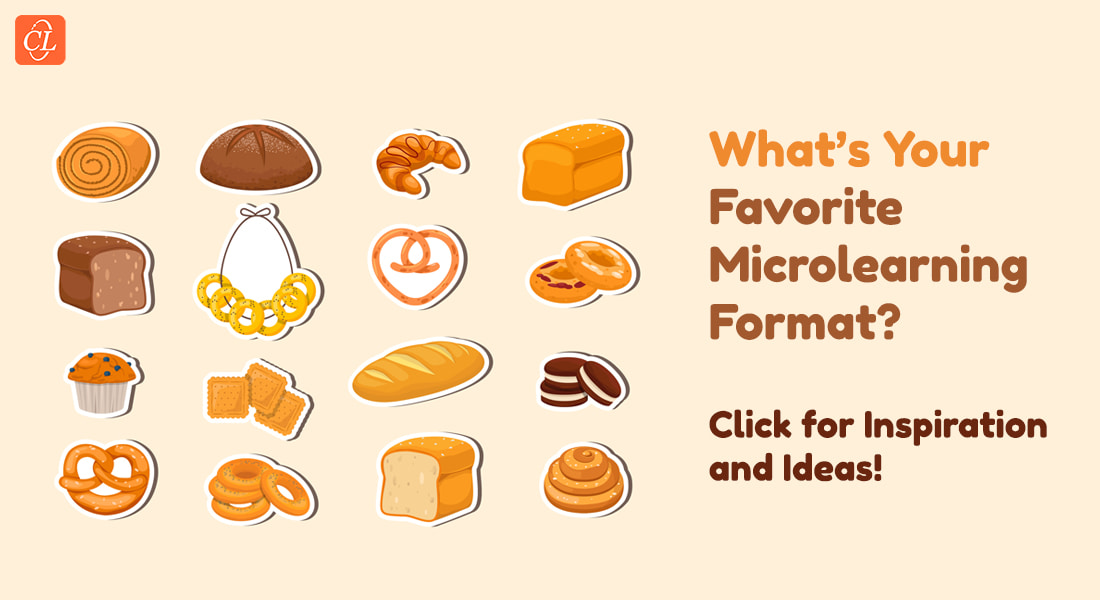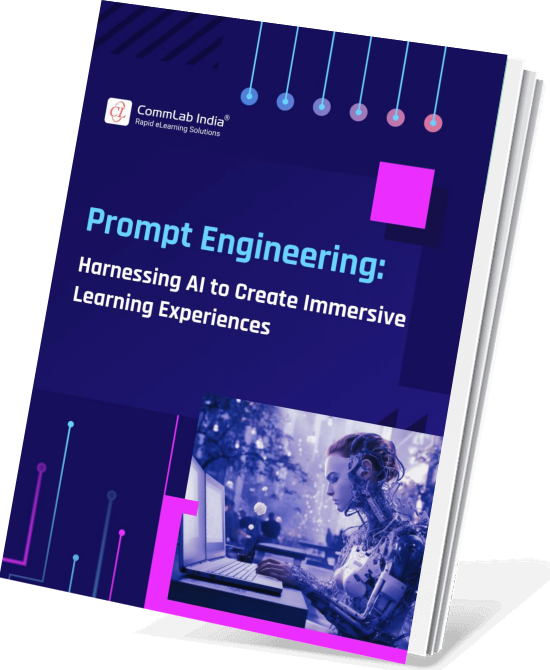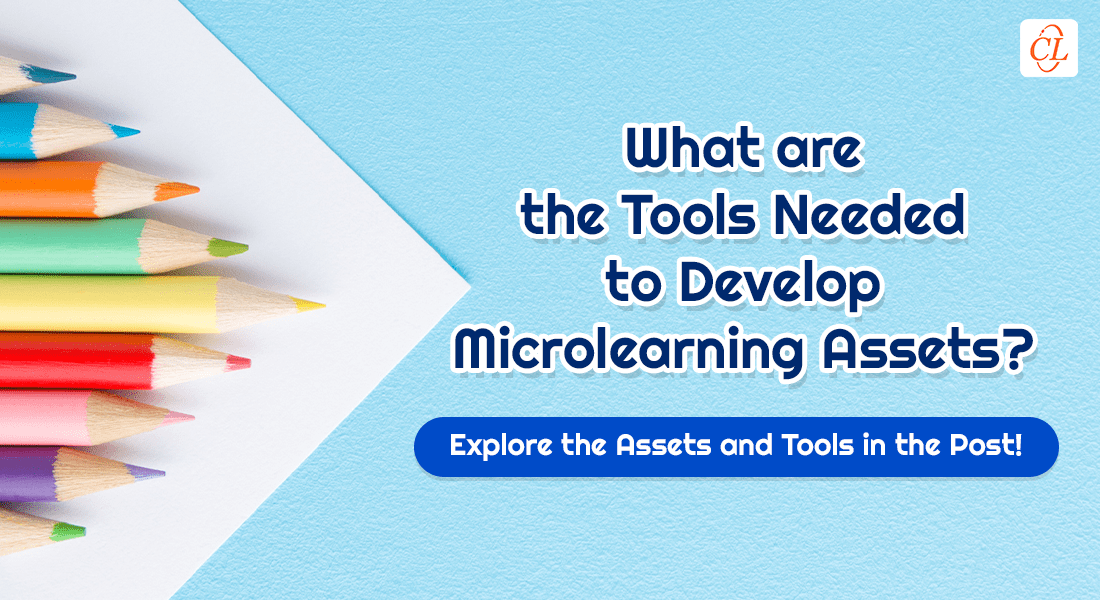15 Best Examples of Microlearning Assets to Leverage Right Away!

Did you know? Most learners prefer microlearning over traditional learning methods! Well, this is not surprising considering how learner-centric and immersive it can be. You might wonder whether organizations stand to benefit from microlearning as well. The answer is a resounding yes! Microlearning increases employees’ productivity and performance significantly because learners get access to relevant information they are looking for, right when they need it. That’s right! While there are several benefits of microlearning, the biggest one is that it can fit right into your existing training model. Intriguing! Isn’t it? So, adopt microlearning into your learning strategy and improve your organization’s business goals. Continue reading this blog to find out more and learn about the different microlearning assets that are a must-try.
→ Download Now: Microlearning — Where Does It Fit in Your Learning Strategy?
Table of Contents
- What Is Microlearning?
- Why Should Organizations Adopt Microlearning for Corporate Training?
- What Are the 15 Best Examples of Microlearning Assets?
- What Are Microlearning Development Tools and What Can L&D Teams Expect from Them?
- What Are the Popular Tools for Developing Microlearning Assets?
What Is Microlearning?
Microlearning is a strategy where large chunks of information are broken down into small, digestible nuggets. These mini-modules often range between 7-15 minutes and focus on accomplishing a single learning objective.
Why Should Organizations Adopt Microlearning?
Here are a few of the many impressive reasons why organizations should consider adopting microlearning for their corporate training initiatives.
1. Concise, relevant microlearning modules promote better understanding of concepts and lead to increased knowledge retention.
2. Microlearning helps in boosting learner engagement and interactivity as it caters to different learning styles and preferences.

3. Microlearning provides learners with flexibility and convenience as they can access the training material anytime, anywhere, and on any device. This further strengthens the idea of continuous learning.
4. Microlearning courses take less time to develop and are cost-effective.
5. It facilitates just-in-time learning, thereby enabling better productivity and performance.
So you’re planning to integrate microlearning into your training program? Awesome!
Here’s a video to help you plan your microlearning strategy in 3 steps. Check it out right now!
Once you’ve watched the video, it’s time to take a good look at the top 15 microlearning assets that you can leverage for effective, engaging, and learner-centric training!
What Are the 15 Best Examples of Microlearning Assets?
Microlearning is flexible both in terms of knowledge consumption and implementation. You can get creative with how you want to incorporate the following microlearning assets in your training programs. Here’s a glance at the 15 best microlearning assets.
Want to Make Your Microlearning Courses Engaging and Impactful?
Here’s a comprehensive list of 15 microlearning assets that are a must-try!
- Microlearning Videos
- Interactive PDFs
- Microlearning Apps
- Microlearning Games
- Infographics
- Microblogging and Posts
- Podcasts
- Quizzes
- Simulation
- Digital Flashcards
- Short Sims
- Animated Videos
- Explainer Videos
- How-to Guides
- Webisodes
Now let’s explore each microlearning asset in detail!
Microlearning Videos
Written content provides learners with reams of information. However, in a world of dwindling attention spans, it’s videos that hold everyone’s attention. They’re one of the most captivating formats for imparting knowledge in the quickest manner possible.
So you can leverage microlearning videos to boost learner engagement and promote attention. You can break down the lengthy online modules into short 7 to 15-minute microlearning videos. This brings an element of interaction and interest to the learning process. Learners can watch informational videos anywhere, be it in the office, at home, or even on the go!
Interactive PDFs
Interactive PDFs are a great microlearning asset to convey information in an engaging and interesting manner. You can include clickable elements, embedded multimedia, links, GIFs, etc. All these things provide the learners with an opportunity to interact with the content, thereby promoting active learning.

Where Does Microlearning Fit in Your Learning Strategy?
Uncover the Secrets to Crafting High-performing Micro Assets!
- What Microlearning is and What it is NOT?
- Types of Microlearning Assets
- Tips and Tools for Rapid Microlearning Development
- And More!
Microlearning Apps
Microlearning apps enable learners to access information anytime, anywhere. They are directly associated with the accessibility to a mobile phone. Mobile-friendly microlearning design allows learners to quickly access the required information at the click of a button. Microlearning apps are an impressive option to attend to the learning needs of diverse, avid learners.
Microlearning Games
Who said games are only for children? Well, if you design games in a way that they end up imparting knowledge and polishing skills, then they can be for everyone! Micro-games are an effective asset where you can train learners in a fun and engaging way. You can create multi-level games for various types of training ranging from product training to onboarding to sales enablement and more!
Infographics
Infographics are another spectacular way of adding microlearning to your L&D program. You might ask why. It is because they are engaging and all-encompassing. They cover all the information learners might need to cover on a certain topic and they present it in a way that captures the learners’ attention.
Learners prefer infographics over regular text-based content because the former comes with an insightful flow of information. Infographics are rarely presented to be direct. Instead, they’re depicted in a way that learners connect each piece of information with the other step-by-step. Their graphical representation also helps with visual learning.
Microblogging and Posts
Leveraging this microlearning asset is a great way to promote interactivity and learning among employees. You can use the company intranet to share various short tips and tricks, best practices, updates, activities, etc., to help employees learn new things without being overwhelmed.
Podcasts
Micro podcasts are useful for learners with strong auditory memory. Learners can use this microlearning asset to gain some light information. This format comes in handy when the learners are traveling or doing some other work that doesn’t demand much attention.
Quizzes
From interactivity to evaluation, interactive quizzes are a powerful microlearning asset. You can use them in various types of training and in different ways. Quizzes can be used for various assessment purposes.

Simulation
Simulations immerse learners in real-world scenarios that mirror situations the employees are likely to face in their professional roles. This allows them to develop essential skills and gain knowledge in a risk-free environment without the fear of real-life consequences. The experiential learning facilitated by simulations fosters lasting retention of information and improves the practical application of acquired concepts in the actual work context.
Digital Flashcards
Digital flashcards are an interactive microlearning asset. One side contains a small chunk of information, and the other side has a clickable prompt. The information is revealed when the learners click the prompt. This can be used for definitions, terminologies, etc.
Short Sims (Simulations)
Short sims are short simulations that help learners absorb training content in a safe environment. They offer hands-on learning to boost interaction and engagement. However, designing short sims for maximum impact requires careful planning and evaluation. They help learners develop skills effectively.
Animated Videos
Animated videos in microlearning are short video bursts that engage learners effectively. While these are engaging and interactive, L&D professionals should critically assess their appropriateness for specific microlearning training goals. Investing in professional animation and storytelling expertise is crucial for effective microlearning. When used judiciously, animated videos can simplify complex microlearning ideas and facilitate deeper understanding. L&D leaders should gauge microlearning learner feedback and analytics to measure their impact.
Here’s an infographic to help you garner the right feedback for maximum efficiency.
Explainer Videos
Explainer videos are microlearning tools for simplifying complex concepts. However, you will have to remember that the success of these videos' hinges on concise, accurate microlearning content. Considering this, you will have to ensure that these explainer videos are rigorously researched, have been approved by your subject matter experts (SMEs) and up to date to provide valuable insights to your microlearning learners.
When executed well, explainer videos can significantly enhance microlearning, understanding, and retention. However, learning and development (L&D) leaders must monitor their impact on microlearning and ensure they align with specific microlearning objectives.
How-to Guides
How-to guides are valuable for providing step-by-step instructions. Offering these guides as microlearning modules helps employees whenever and wherever needed. However, L&D leaders must prioritize clarity, precision, and user-friendliness when creating these microlearning resources. High-quality how-to guides can expedite microlearning task mastery. L&D leaders should regularly update and refine these microlearning guides to keep pace with evolving microlearning processes and technologies.

Webisodes
Webisodes can sustain microlearning learner engagement over time, but L&D leaders should monitor viewer analytics closely. They must ensure that microlearning content remains relevant and aligned with strategic microlearning goals. When executed effectively, webisodes can create a sense of continuity and anticipation in microlearning. L&D leaders should evaluate their effectiveness in maintaining long-term microlearning learner engagement and adjust microlearning content accordingly.

Where Does Microlearning Fit in Your Learning Strategy?
Uncover the Secrets to Crafting High-performing Micro Assets!
- What Microlearning is and What it is NOT?
- Types of Microlearning Assets
- Tips and Tools for Rapid Microlearning Development
- And More!
What Are Microlearning Development Tools and What Can L&D Teams Expect from Them?
Microlearning development tools are software solutions used by L&D teams in organizations to develop bite-sized, focused learning experiences that align with modern learners’ expectations. These powerful learning solutions offer learners quick bursts of information that can be accessed from any location, at any time using any digital device.
L&D teams can use different microlearning development tools to create custom content for their microlearning courses. They can curate videos, infographics, digital flashcards, eBooks, etc., using these platforms. Such engaging, interactive elements limit the need for long, detailed courses. They’re also well-suited for providing just-in-time learning, enabling better application and retention of concepts.
With Artificial Intelligence (AI) gaining prominence in the corporate landscape, L&D teams can expect advanced features coming into play that allow quick, seamless, and high-quality development of microlearning assets.
What Are the Popular Tools for Developing Microlearning Assets?
Most microlearning development tools are a means to the same end. However, you can find different tools specializing in different microlearning assets along with all-in-one solutions.
So, let’s check out the most popular tools to help design and develop microlearning courses, videos, infographics, and images:
Top 3 Authoring Tools for Developing Microlearning Courses
Microlearning development tools are essentially eLearning software that enable the creation of quick, concise, and targeted courses using interactive elements, such as videos, podcasts, games, and images, to mention a few.
Here are the three best picks.

1. iSpring Learn
iSpring Learn is a microlearning authoring tool that allows L&D teams to streamline and automate corporate training using responsive design with strategically placed knowledge checks. Microlearning developers that switch from traditional online training methods to this innovative approach can also upload their existing PPT slides, videos, and courses, as long as they’re SCORM compliant.
iSpring Learn is an excellent tool for rapid microlearning development. It helps training managers automate the training programs where learners are sent regular updates related to the course and also reminders about the deadline, keeping track of employee performance. Moreover, iSpring enables access for learners using iOS or Android empowered applications on their mobile devices, at any time, and from any location.
2. EduMe
EduMe is a mobile-based microlearning application that enables L&D teams to blend corporate training and internal communication into a single solution. Using this application, you can easily create short courses, surveys, and quizzes and grant access at your employees’ fingertips.
You can use EduMe to share product campaigns and policy updates with your team while also monitoring their training performance.
3. EdApp
EdApp is a mobile and desktop-based learning management system. L&D teams can use it to create microlearning courses and utilize highly responsive templates that are made up of text, infographics, images, and videos. L&D managers can also integrate the tool with the application’s cloud delivery system and send and receive content to and from SCORM.
While EdApp offers the same utility as many conventional solutions in the market, it stands out because of its capability to translate languages and enable teams to convert their courses into over a dozen languages in seconds.
With AI coming into picture, the way we design microlearning has taken a significantly different turn. It’s better, more efficient, and definitely time-saving!! So check out the video below to know how you can design high-impact, effective microlearning with the help of AI tools.
Top 3 Tools for Developing Microlearning Videos

Videos are by far the most popular microlearning format, as they allow for efficiency in information processing, knowledge retention, and memory recall. Thus, several eLearning companies are specializing in making microlearning videos, including:
1. Vyond
Vyond, previously known as GoAnimate, is a microlearning video console used to create short videos to engage learners. It has a straightforward user interface and packs several editing options, audio-visual tools, as well as supports resources that enable L&D teams to create professional, on-brand corporate training videos.
2. Animoto
Animoto is another video-based application that boasts of a host of production options that help L&D teams create stunning video presentations and slideshows consisting of photos, video clips, and music. They’re the go-to solution in the market today to help create explainer videos. They’re suitable for sales and marketing teams that are introducing new products or to HR teams onboarding new employees.
3. Biteable
Biteable is one of the world’s most popular online video development tools used by internal communication teams. This highly efficient and intuitive site takes all the guesswork out of creating microlearning videos. It enables L&D teams to showcase their expertise and create unique corporate training content using built in resources by combining them with stock elements.
Top 3 Microlearning Tools For Creating Infographics

If you’re not creating microlearning videos and courses, then you can use image-based microlearning tools to create infographics and enrich your learners’ experience. Here are a few popular infographic development tools:
1. Canva
Canva is the world’s most popular online graphic tool that is free and can make even aspiring L&D professionals look like veterans in the industry. It enables the creation of professional, high-quality graphic layouts for online training programs.
This powerful tool offers an extensive range of images, graphics, layouts, themes, fonts, colors, and grids. It has everything you need to make your online learning content more memorable.
2. Crello
Crello is an excellent tool for L&D teams that want to learn how to design infographics. It boasts several graphic design tools and a vast library packed with thousands of stock images and illustrations that you can blend with your content and improve learning outcomes.
With Crello’s versatile formats, you can publish your infographics on multiple platforms and enlarge the reach of your online learning programs.
3. Piktochart
Piktochart is a brilliant tool that enables microlearning content developers to create stunning SEO-powered (search engine optimization) infographics, interactive charts, and custom images with relative ease. This makes it an excellent solution to help you design and publish easy-to-access training material on your website and social media platforms.
Many companies also use it to create product demos with targeted, SEO-based keywords.
Microlearning Tools for Interactive Documents
Finally, we have the microlearning tool to create interactive documents, such as eBooks, interactive PDFs, charts, and other data-driven visuals. The most popular tool in the market designed for this purpose is:
1. ShotClasses
ShotClasses is a powerful mobile microlearning platform that allows users to create PPT slides, eBooks, interactive PDFs, quizzes, and eLearning elements with speed. Employees can easily view these documents using their smartphones and access need-to-know information on-demand.
Summing Up
There you have it! Ten best examples of microlearning assets that inspire you to improve your organization’s training program. Not just that, now you also know the well-known microlearning asset development tools. You can easily create engaging, learner-centric microlearning courses by curating high-quality microlearning videos, infographics, digital flashcards, etc. So what are you waiting for? Equip your teams with the microlearning solutions they need to kick start their learning journey. It’s easy to use all or a combination of microlearning assets into your comprehensive eLearning strategy. Check out the eBook below to understand where does microlearning fit in your learning strategy.
Editor’s note: This post was originally published on July 10, 2024 and has been updated for comprehensiveness.






![Microlearning Trends to Look Out For in 2024 [Infographic]](https://blog.commlabindia.com/hubfs/blogs/microlearning-trends-look-out-for-info.jpg)
![Understanding Microlearning – What it is and What it Isn’t [Video]](https://blog.commlabindia.com/hubfs/Imported_Blog_Media/microlearning-what-it-is-webinar-video.jpg)